I have found this module with interesting features, which I am going to test and has as its core the already known ESP32 from Espressif, since we are resuming activities we present the ES32A08 module.
The ES32A08 is a versatile and powerful expansion board designed to extend the functionality of the 38-pin ESP32 microcontroller, enabling a wide range of automation, monitoring, and control possibilities. With its impressive features, this expansion board is perfect for those looking to integrate ESP32 capabilities into projects that demand multiple I/O options, voltage, and current monitoring. Here’s a detailed look at the features and potential applications of this exceptional board.
Warning
Although there are a wide variety of possibilities with this module, from my point of view in critical applications or implementations, a controller that complies with regulations, standards and is more robust should be considered.
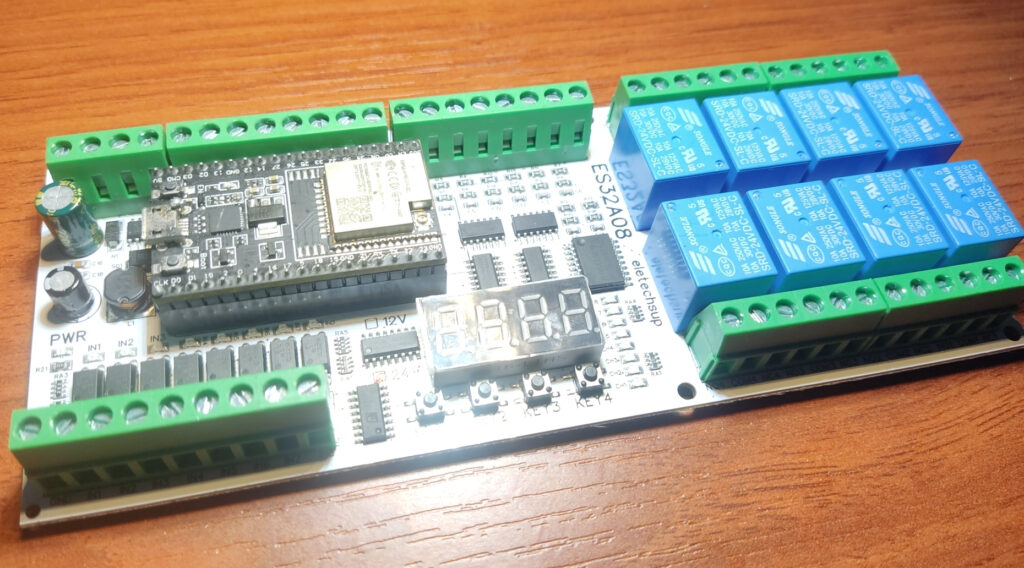
Key Features of the ES32A08 Expansion Board
- Operating Voltage: The ES32A08 is designed to operate at either DC 12V or DC 24V, making it compatible with a variety of power supply options.
- Current Consumption:
- Standby current (with digital tube OFF): 14mA
- Standby current (with digital tube ON): 51mA
- When relays are activated, the current ranges from 76mA (1 relay open) to 291mA (8 relays open), giving flexibility for different loads and usage.
- On-Board Resources:
- RS485 Interface: Allows integration with industrial devices, making it ideal for communication with PLCs (Programmable Logic Controllers) or other RS485-based systems.
- 8 Opto-isolated Inputs: These NPN type, low-level trigger inputs provide reliable signal isolation, making the board suitable for industrial environments.
- 4 Current Inputs (0/4-20mA): Ideal for monitoring various sensors, this feature allows real-time current data collection, commonly used in industrial applications.
- 4 Voltage Inputs (0-5V/10V): Offers flexibility for voltage monitoring, enabling the capture of data from sensors or other voltage-output devices.
- 8 Relay Outputs: These outputs can control various devices, making the ES32A08 ideal for applications requiring on/off control.
- 4 Buttons: Allow manual control or configuration of the board’s functions.
- 4-Bit Digital Tube Display: Provides a simple interface for displaying real-time status or data.
- ESP32 Slot: An ESP32 microcontroller can be connected, bringing powerful processing and communication capabilities to the board.
- Size and Weight:
- The board measures 180mm x 72mm x 19mm, making it compact enough for integration into existing systems.
- It weighs 189g without the shell and 317g with the protective casing, ensuring durability and ease of mounting
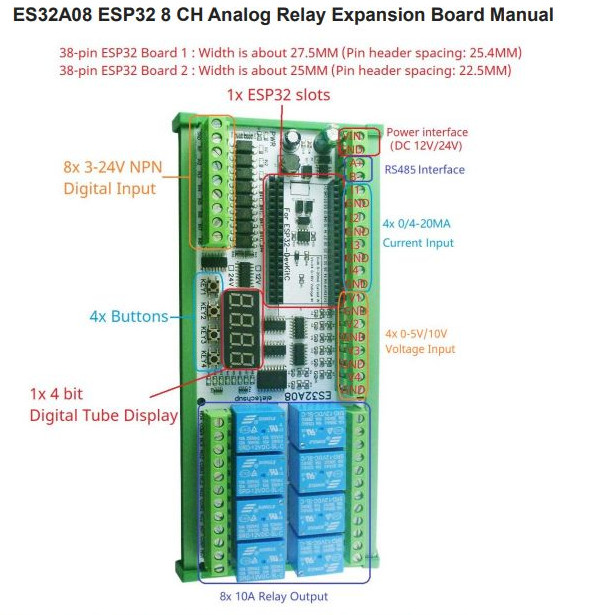
Wide Range of Applications
The ES32A08 board is designed to unlock the potential of the ESP32 microcontroller for various applications. By writing custom ESP32 code, you can implement diverse functions such as:
- WiFi Remote Control Switch: Control connected devices wirelessly through WiFi, enabling remote automation and monitoring.
- Current and Voltage Collection via WiFi: Collect real-time current and voltage data and transmit it wirelessly for remote monitoring and data logging.
- RS485 Master-Slave Device Control: The RS485 interface allows seamless integration with other industrial devices, making it suitable for controlling PLCs, MCUs, and other equipment.
- Motor Control: Achieve motor forward and reverse control, ideal for automation and robotics projects.
- Timing Functions: Implement various timing-related applications such as power-up delays, trigger delays, infinite loop delays, or a finite number of cyclic delays.
- Power Sequencer: Manage power-on sequences for connected devices, making it an excellent choice for complex systems requiring controlled power-up routines.
Advantages and Considerations of This Control System
Using the 74HC165 and 74HC595D chips is an ingenious solution that allows the ES32A08 to handle multiple I/Os with minimal connections to the ESP32. However, it is important to note that due to this multiplexing and shift register system, control of the inputs and outputs is not direct or instantaneous. There is a slight delay in reading and triggering the signals, which might not be ideal for applications that require ultra-fast responses.
This implementation makes the ES32A08 very versatile, but it is important for users to understand the limitations and advantages of working with shift registers and multiplexers instead of direct connections. Although this approach does not have the robustness of an industrial PLC, it is an excellent choice for automation, control, and prototyping projects looking to expand the capabilities of the ESP32 in a cost-effective and efficient manner.
In summary, the use of the 74HC165 and 74HC595D in the ES32A08 is a feature that adds functionality and flexibility to the module, allowing the expansion of inputs and outputs without sacrificing too many resources of the ESP32, although it requires an understanding of how to operate these interfaces to take full advantage of them.
Digital Input
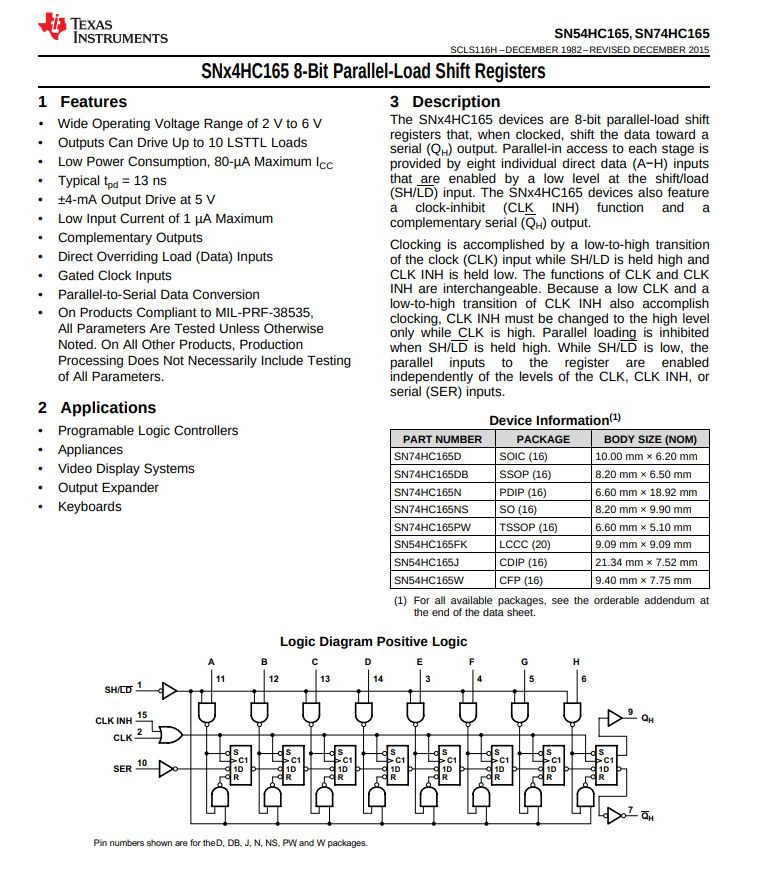
Digital Outputs
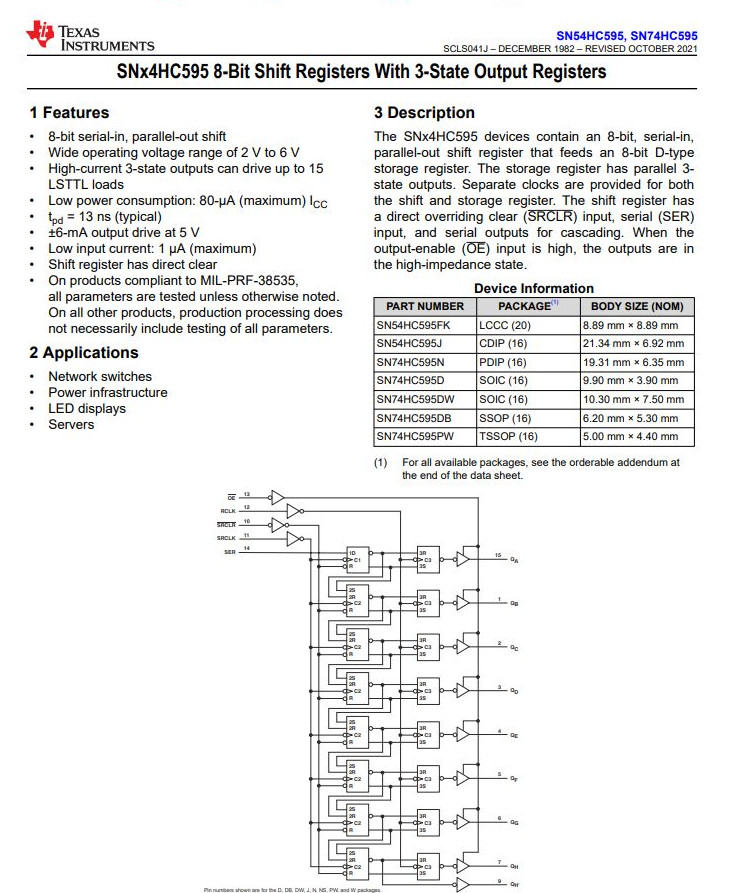
I will actually use the ES32A08 with esp-idf because it is a robust programming environment, it controls the multiplexing of inputs and outputs without problems, before acquiring this module keep in mind what was mentioned above that digital inputs and outputs work by multiplexing!!
Getting Started with the ES32A08 Expansion Board
The ES32A08 is based on the 38-pin ESP32 and requires the ESP32 module to operate. Although the manufacturer provides sample codes for testing hardware, you have the flexibility to develop custom functionalities for your projects. It’s important to note that the ESP32 module is not included with the ES32A08, so you’ll need to obtain it separately if you don’t already have one.
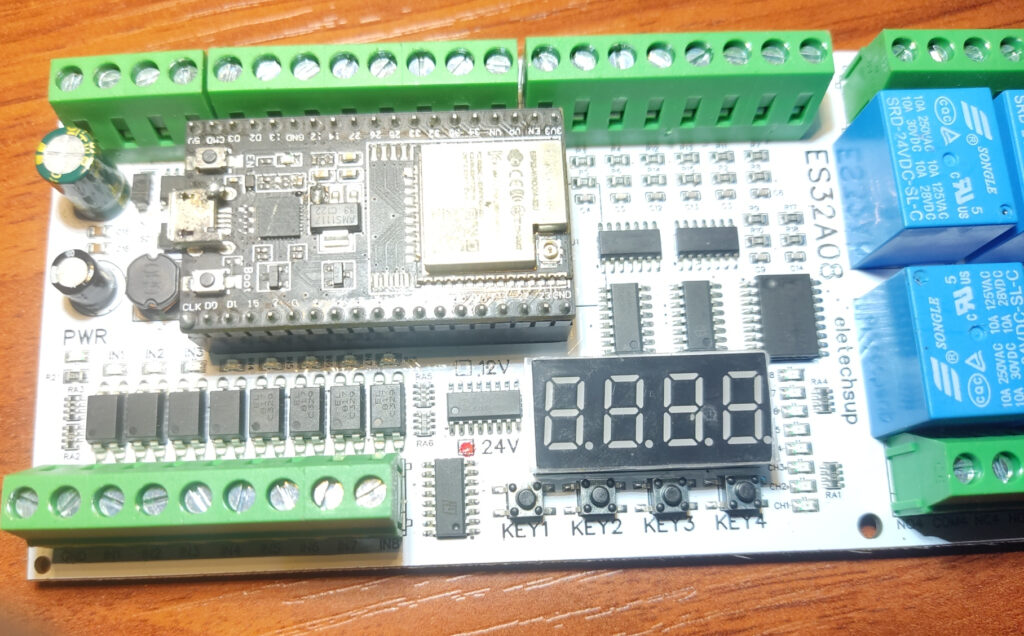
Conclusion
The ES32A08 expansion board offers a rich set of features that extend the capabilities of the ESP32 microcontroller, making it suitable for diverse applications ranging from industrial automation to DIY electronics projects. Its combination of relay outputs, opto-isolated inputs, current and voltage monitoring capabilities, and RS485 interface allows you to create sophisticated control and monitoring systems. By harnessing the power of ESP32, you can unlock endless possibilities with this versatile expansion board.
